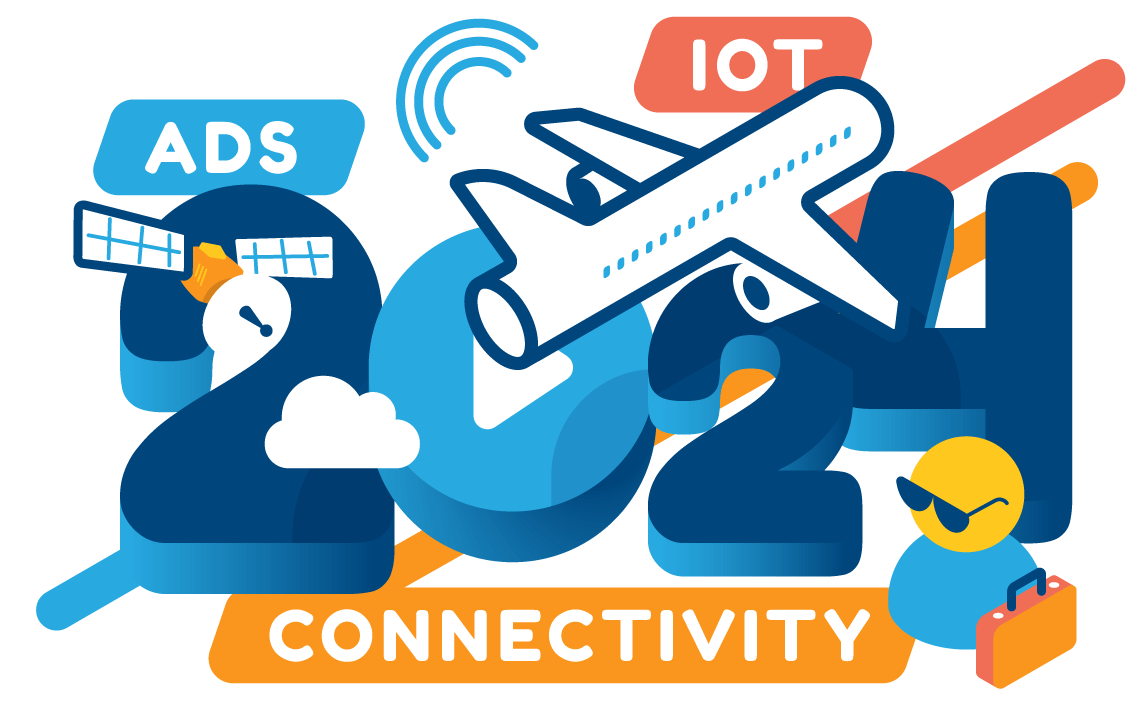

Aerospace Industry Trends to Track in 2024
Aerospace in 2024 looks as exciting as ever, so let’s explore the industry trends and what the new year has in store.
Introduction
As the aerospace industry moves further away from its pandemic halt, International travel continues to grow in recovery. With global air traffic now at 95.7% of Pre-Pandemic levels, Airlines are shifting gears to stay ahead of the curve, focusing on increasing revenues, Pax, decreasing costs and on-board systems development.
From Personalized Content Delivery and Data-Driven In-Flight Advertising to Satellite interconnectivity and Predictive Maintenance, 2024 has much to offer. Let’s explore these key trends and what they mean for the future of aerospace.

Sky-High Customization: How Airlines Are Harnessing Passenger Data
In a significant shift within the airline industry, highlighted by a case study initially reported by The Wall Street Journal’s Patience Haggin, there is a move towards personalized advertising. This strategy involves utilizing extensive passenger data to deliver tailored advertisements, potentially revolutionizing how airlines interact with customers. The focus is on the development of 'passenger personas', aiming to enhance the customer experience by ensuring that advertisements are closely aligned with individual needs and preferences. This personalized approach goes beyond mere ad selling, seeking to enrich the overall passenger journey with content and services reflective of their unique travel patterns. The evolution in airline marketing sets a trend for the industry as it adapts to new marketing dynamics.
Utilizing alrogithms to analyse passengers’ travel history, purchasing behaviors and social media activity, airlines are able to further tailor advertisments and services to individual needs while predicting preferences and behaviours.
Then, with dynamic adaptation, the software adjusts offerings in real time, generating revenue streams through targeted advertising in real time.
This move signals a strategic pivot towards more sophisticated customer segmentation and targeted advertising within airline loyalty programs. Drawing on the expertise of these professionals from industries known for their aggressive marketing tactics, airlines are increasingly focusing on applying similar segmentation and marketing strategies. This approach reflects a broader industry trend, where major players are seeking to balance innovation, customer trust, and privacy concerns. The inclusion of opt-out options for customers is a key aspect of this strategy, mirroring shifts seen in other sectors like hospitality.

Soaring Connectivity with Hybrid and Multi-Orbit Satellites in Aviation
The integration of GEO and LEO satellites in a hybrid model demands sophisticated software for dynamic bandwidth management to support activities like video streaming and conferencing. This software must ensure network stability while intelligently allocating bandwidth for high-demand applications. As connectivity broadens, crucial aspects like cybersecurity become paramount to protect passenger data and privacy. User experience is also a focus, with the development of user-friendly Wi-Fi interfaces and scalable systems that maintain performance as user numbers grow.
Companies with expertise in content management and onboard connectivity are increasingly vital in shaping these trends. Axinom’s commitment to security and user experience aligns with the needs for advanced, reliable in-flight connectivity solutions. Positioned to meet modern connectivity challenges, Axinom reflects the industry’s shift towards more sophisticated network systems, addressing both current demands and future developments.

A New Flight Path: The Emergence of IoT in Aerospace Technology
Aircraft networks increasingly accommodate IoT devices, utilizing a common language for device capabilities and interfaces for seamless integration. This trend includes adopting human-readable interface definitions like XML or JSON, and enhancing the discoverability of new devices and their features for integration into existing systems. A critical aspect of this integration is ensuring adherence to strict aircraft certification and configuration management processes, highlighting the importance of security and compliance in this domain. Moreover, the use of web addressing (Uniform Resource Identifiers) for device communication and the adoption of Machine-to-Machine (M2M) communication standards underscore a shift towards more sophisticated, interconnected aircraft systems. This technological evolution represents a significant leap in the efficiency and functionality of aircraft systems, promising enhanced capabilities and more robust security in the ever-evolving aerospace sector.

From Reactive to Proactive: The New Era of Aviation Maintenance
Predictive maintenance is a transformative approach in the aviation sector, offering a solution to the costly challenge of aircraft delays and associated maintenance. Flight delays inconvenience passengers and have a significant financial impact, with the FAA reporting over $33 billion lost to the US in 2019 due to these delays. Maintenance issues are a notable contributor to these delays and account for around 5% of them, which translates to a substantial amount of monetary loss.
Maintenance issues significantly contribute to airline delays and financial losses, highlighting the need for efficient maintenance strategies like predictive maintenance. This data-driven approach, gaining traction in the airline industry, not only cuts operational costs but also aids in future aircraft design, signaling a shift towards a more resilient and economically sustainable air travel industry.
As 2024’s 3rd month gets underway, the aerospace industry, rebounding post-COVID-19, is moving from recovery to expansion. Airlines need to collaborate with innovative companies like Axinom to stay competitive in the evolving aerospace landscape. Such partnerships promise a future of heightened innovation and enhanced passenger experiences, surpassing current expectations.








